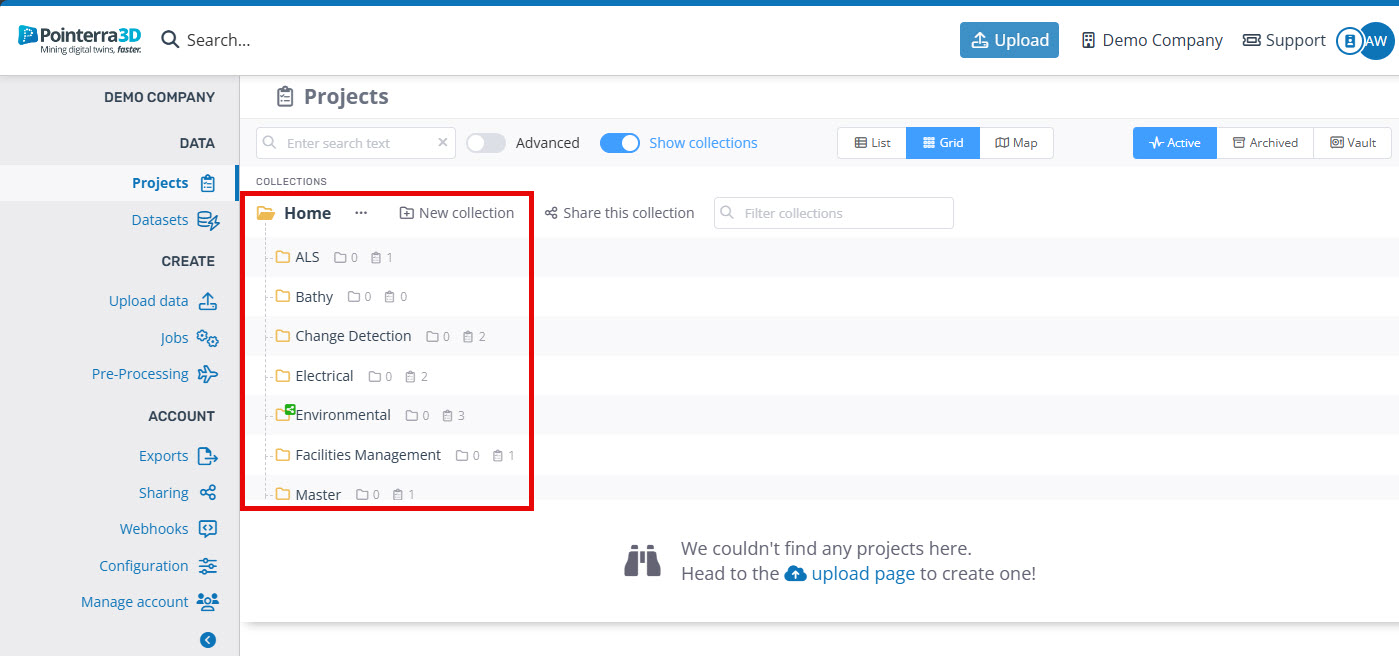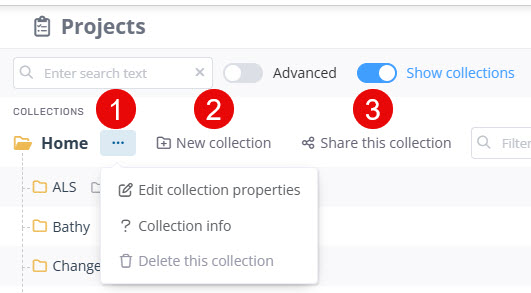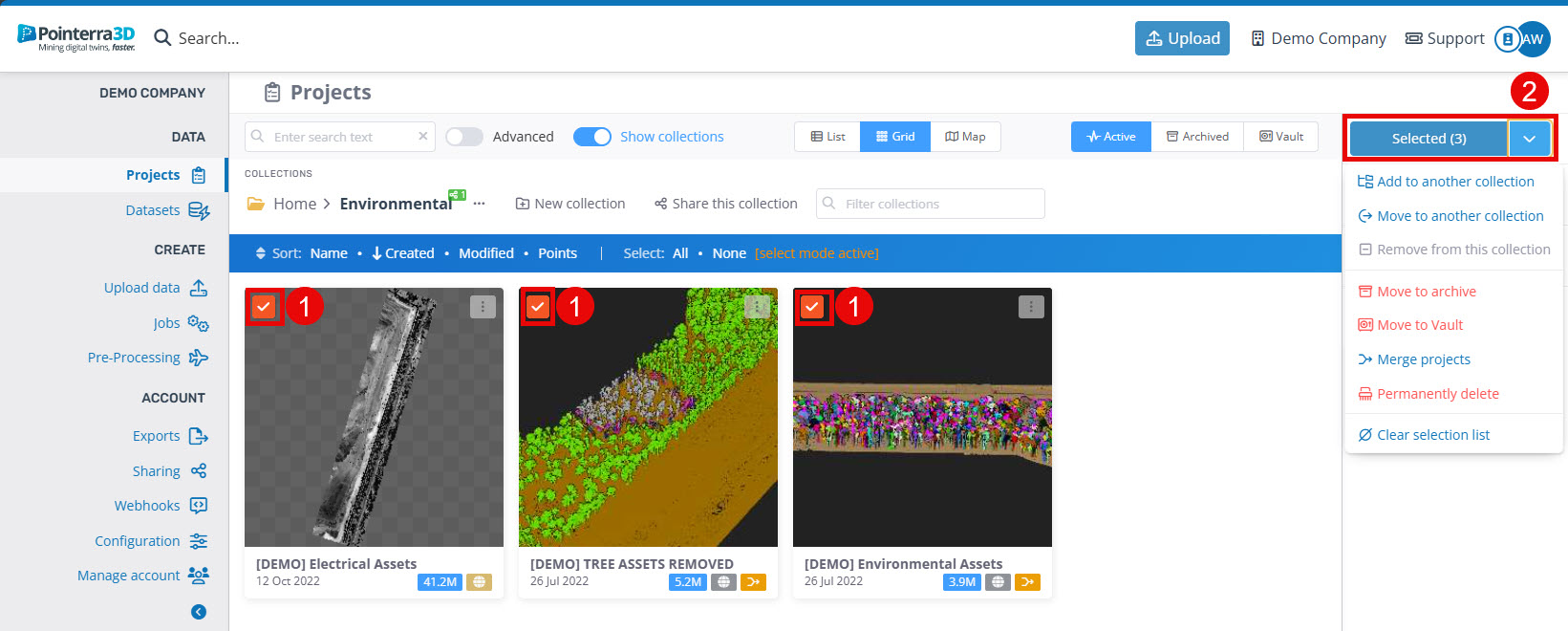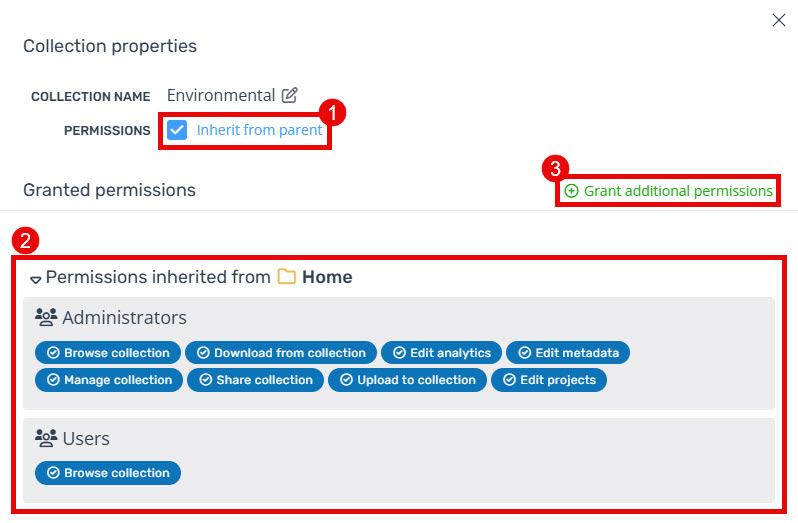Using collections to manage your point clouds
Collections provide a way to organise your point cloud data and manage permissions for your users and teams (note: the collections used for organising point clouds are separate from the folders used to organise datasets).
Collections are similar to the folders used to organise files on disk, with a few important differences. Notably, point clouds can be in multiple collections at once, with different permissions on each - this allows for view-only collections that you can share between teams, for example, or to restrict which collections certain users can upload to.
When browsing your company's point clouds, you'll see the collections listed at the top of the page, letting you navigate through the tree structure:

If you've been granted permission to manage a collection (or are a company administrator), you will see an actions menu next to the current collection name. From here you can edit the properties of the collection, look at the collection info and delete the collection (1). You will also be able to add a new sub-collection to the folder you are currently in (2), and finally have the ability to share this collection (3).

Managing individual or multiple point clouds
To copy or move point clouds to another collection, select the point clouds by ticking the box in the top left corner of their point cloud view (1). Then click on the selected button to bring up several options for managing the pointcloud/s (2).
For more information on the options:
- Archive and Vault, click here
- Merge projects, click here

- You'll only be able to move point clouds if you're a company admin, or if all of the selected point clouds are in the same collection.
- If the point clouds are in more than one collection, you'll also see the option to remove them from the current collection.
Managing collection permissions
By default, collections will inherit all permissions from their parent collection. This option can be turned off to give finer control of permissions for certain parts of the collection tree - just un-check the option when editing a collection's properties (1). Under the granted permissions sub-heading you can also see the permissions of different teams that have been inherited from the parent collection (2). By selecting Grant additional permissions, you can select a specific user to give other permissions (3).

After selecting the user to grant additional permissions to (using their email), you can select the desired permissions to grant, as shown below.

